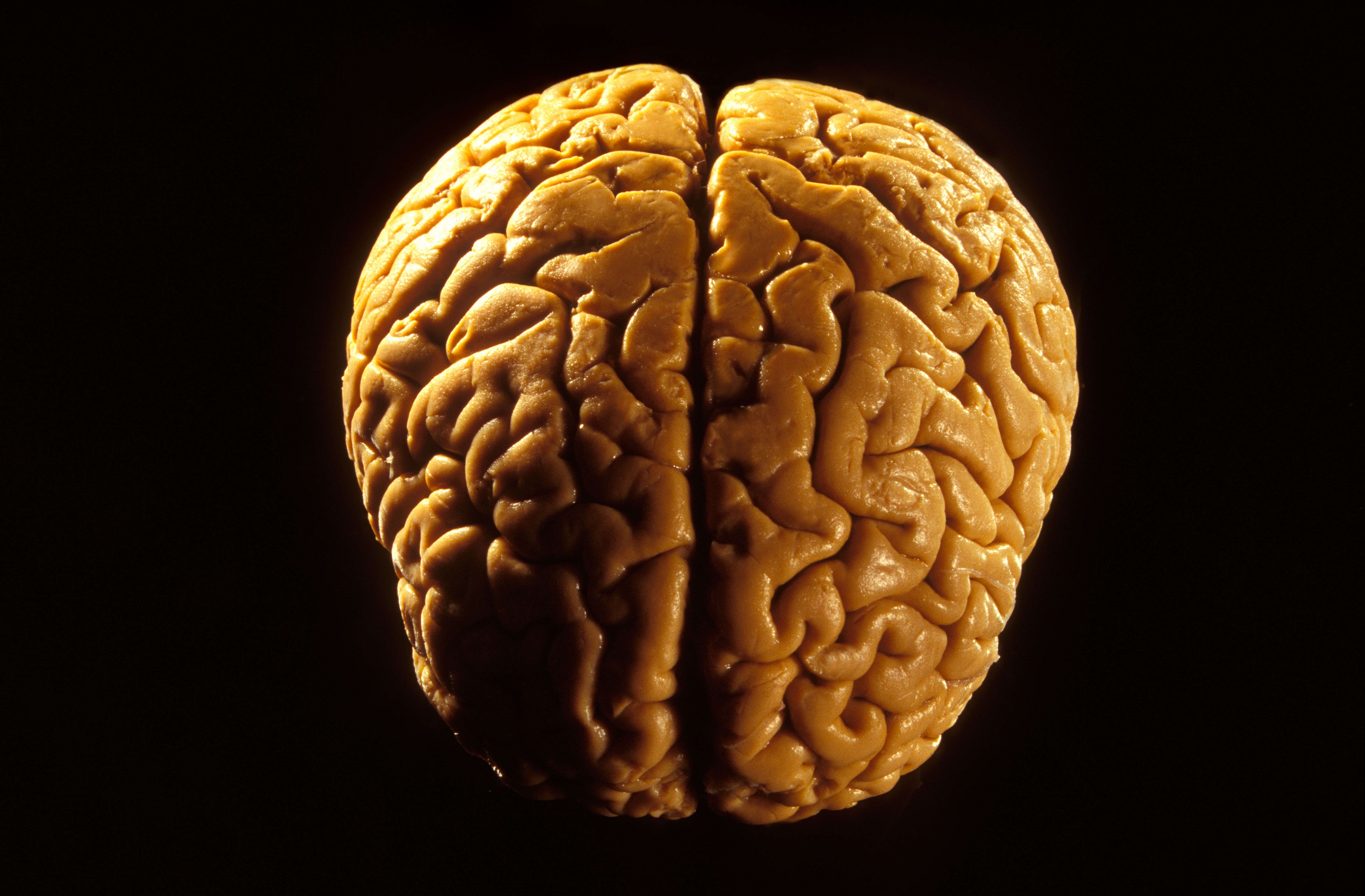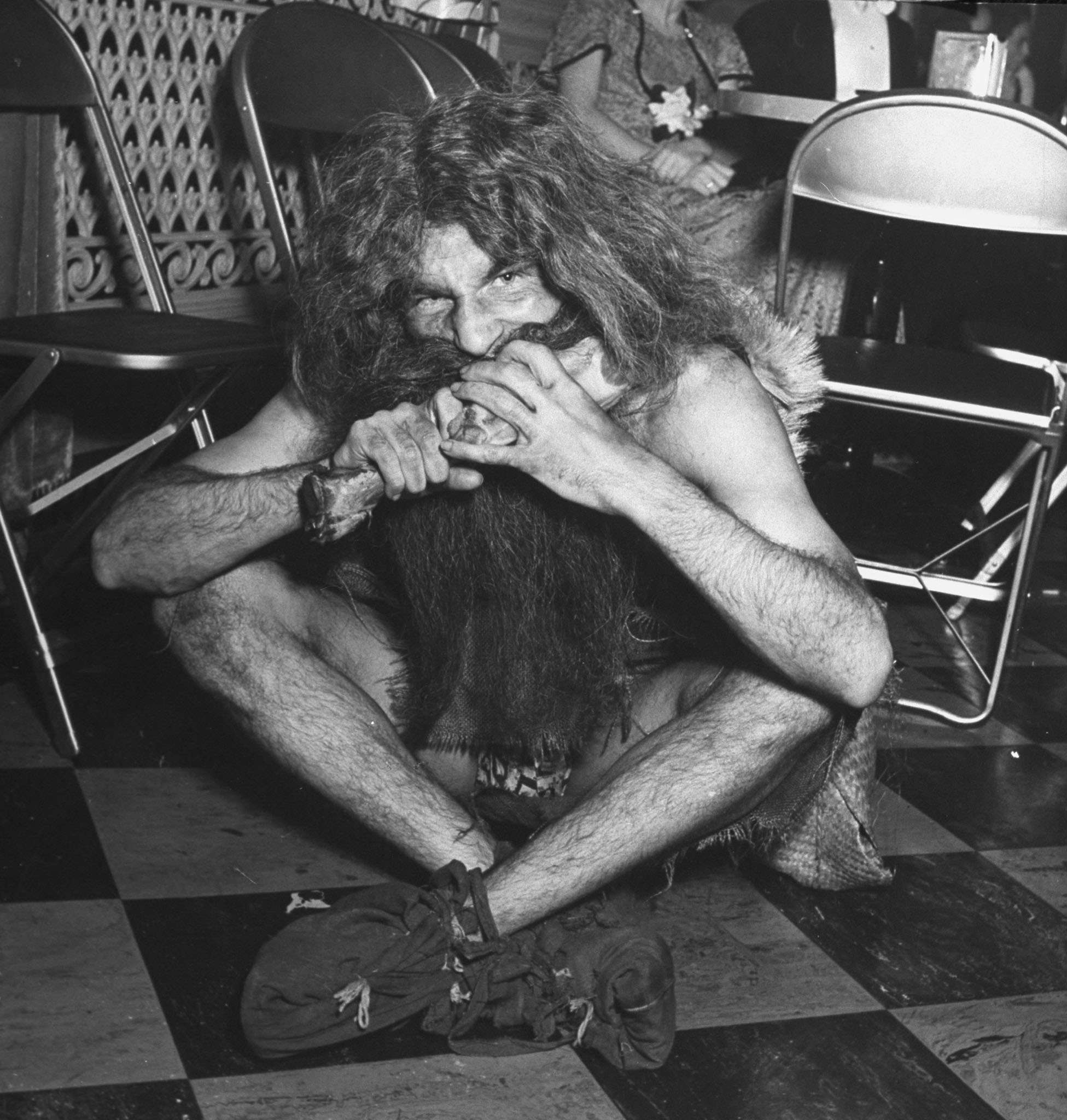Create a free profile to get unlimited access to exclusive videos, sweepstakes, and more!
Did human brains get so huge because we could take down mega-mammoths?

Cavemen are often stereotyped as brawny and brainless, the type who growled “ooga booga” and were so intellectually inept that they would need no-brainer car insurance if they were around today. So how did Homo sapiens evolve so much gray matter?
Though any relatives of the Croods might seem like all they did was beat things with clubs and just barely discover fire, it was supposedly hunting that made human brains blow up far beyond those of other creatures. There is now a controversial new theory that proposes our human and hominid ancestors got smarter after they had no more megafauna to hunt. Some are thought to have been hunted to extinction. In the absence of plodding mammoths and woolly rhinos, they had to develop quick thinking to maximize the energy return on smaller, faster pray.
“There is evidence that large fauna was abundant when early humans evolved," anthropologist Miki Ben-Dor, who recently published a study in Yearbook of Physical Anthropology, told SYFY WIRE. "At some stage very large species were replaced by smaller (though still large) species with a decline in the richness of species. I believe that humans' preference for large prey was responsible for their demise.”
There are other primates which are technically omnivores but spend most of their days hanging from trees and feeding. For humans, that was too much effort for too little energy, so they hunted. Ben-Dor and Barkai argue that brain size actually began to decline near the end of the Pleistocene as people started eating more plants and let some of the meat they had previously been after run away from their spears. They also believe that human brain size was at its height when when our own many-times-great-grandparents and other Homo species were consuming things that had more fuel—but they had to eat a few mammoths first.
"Humans were probably hypercarnivore until very late in the Stone Age," Ben-Dor said. "At the end of the Stone Age, we see that those humans that lived in regions with high plant availability consumed more plants and eventually domesticated them, although none consumed only plants."
Some scientists, like Ben-Dor, believe that early humans found large, slow megafauna to be easy prey, so they hunted mammoths and other enormous animals to extinction. Others think that megafauna were not so easy to come by. Because of this, hominids and humans developed larger fat reserves to hang on to enough energy to burn until the next kill. Whether either or neither theory is true, a mammoth could probably feed an entire group on the move for weeks, which could be behind the development of our acidic stomachs. They are thought to have evolved that way to be hostile to the parasites that might have crawled into this meat in a time before freezers existed.
Megafauna melted with the Ice Age, and after their extinction, some hominids, like Neanderthals, were unable to adapt and went extinct themselves. Homo sapiens survived because they adapted by learning to hunt other prey.
"Animals that specialize will develop abilities that allow them to obtain their specific food with less energetic expense than generalists, but they risk fluctuations in the availability of their specific foods," Ben-Dor said. "The Neandertal was a relatively heavy robust creature, well adapted to hunting large animals at close encounter. The energetic return on plant gathering would not be sufficient to sustain him, especially in the harsh European winters when plant food is scarce."
When you want to catch something that hides more easily, moves faster and may have clever ways to elude you, then you really need to think of about where and when you’re going to throw that spear. Human brains evolved to figure out how to take down an antelope on the first try as people grew more advanced in hunting.
“[Humans] faced intense selective pressure to efficiently acquire adequate and consistent energy, especially to reliably energize the brain,” Ben-Dor and Barkai said. “Additionally, due to tool acquisition, prolonged child care, and education, humans need more time free from food acquisition than other animals.”
Hunting and eating animals that were smaller than mammoths literally expanded or minds, both because of the thinking needed for a successful hunt and meat that provided just about as much energy and fat as the megafauna that had vanished from the scene. Even Paleolithic humans had too much to do to bother with searching for fruit all day like chimps do now. Human infants have an extended period of dependence compared to other mammals. Making tools required at least some effort. As for education, maybe no one was graduating college back then, but they needed to be taught how to survive.
Because something that cannot be observed without a time machine is difficult to prove, Ben-Dor and co-author Ran Barkai will keep searching for evidence of how hunting and food influenced the human brain.
"We will collect data about hunted fauna from as many archaeological sites as possible, and compare the data through time. If we find a trend in regions where we have evidence for the phenomena that we described in the paper. like the domestication of dogs and the extinction of the Neandertals, we add support to our hypothesis."
The idea that the disappearance of mammoths and their brethren set off an evolutionary boom in our brains is still debated, but it’s on to something. Just know that those car insurance commercials were probably wrong about the intelligence level of early humans.



























